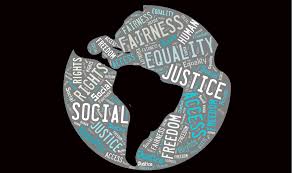Experiential Education
To learn more about experiential education from the Association for Experiential Education, click here
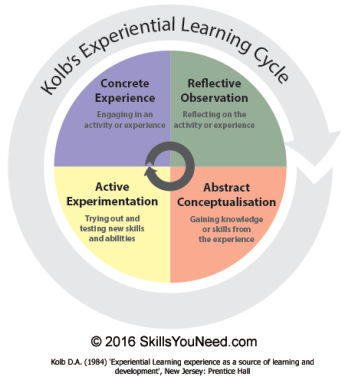
Design-Based Learning
Design-Based Learning (PBL) is one of our experiential methods. It is very different than the typical project a student does in school (or that parents spend time doing “with” their child at home). This video from John Spencer (spencerauthor.com) helps explain it.
Students and teachers have different roles within a DBL project than they do within a traditional classroom. In traditional classes, students are often passive receivers of knowledge and teachers are the active presenters of knowledge–a “sage on the stage”. DBL creates a new dynamic in the classroom.
Students in DBL work in collaborative student groups; pose and solve real-world questions/problems; plan, research, experiment, and reflect; and produce a prototype/solution. They learn by doing and creating!
Teachers in DBL help students set tasks and timelines, learn information and skills needed for their tasks, and find idea resources and expert advisers. They ensure learning goals in all subject areas are attended to within the context of projects. They coach and facilitate.
Click here for more resources.
Social Justice

Social justice is also a cornerstone of teaching and learning at TESG. In our first year of operation, TESG staff worked together to develop the following mission statement for social justice education:
“We, at TESG, believe youth are dynamic agents of change who develop a sense of self/others, recognize injustice, have courage in the face of bias, and act collectively to cultivate equitable communities.”
Our work towards this mission is guided by the Learning for Justice standards for Social Justice Education. These standards are for grades K-12, and they help us structure our social justice teaching in age-appropriate ways across the school. The four main threads within these standards are Identity, Diversity, Justice, and Action.
You can read the standards and learn more about the framework here.
Because this social justice mission underpins our curriculum, our students often engage in conversations, readings, and other work that explore issues related to social justice. These issues may include racism, sexism, classism, homophobia, and other forms of discrimination. Many times these topics are student-led, as they bring their curiosities and life experiences into the classroom. We also strive to offer students more equitable representation in our historical, literary, and current event study. In other words, we make sure to tell the stories of people from a variety of backgrounds and identities so that all our students see themselves reflected in our curriculum. As we tell these stories, we encourage students to examine others’ and their own points of view, challenge them to support opinions with facts, teach them media literacy skills, and model how to have civil debate and disagreement. We know that students are already thinking and talking about these issues, and so we strive to teach them the skills they need to have these conversations productively and to provide a safe structure for discussing these topics. These are all skills that help young people develop as agents of change and as engaged citizens in our democracy. For these reasons, we do not offer opt-outs for social justice projects or discussions.
We also know that social justice work can’t only happen at school, so throughout the year, we share resources with families so they can dialog productively with teachers and their students about how issues are approached with students and attend to any concerns that arise. We hope that together, we can create a home-school partnership that supports our students as they move towards their teenage years and begin to tackle more complex topics in their schooling and in their lives.
The following resources may help:
Universal Design for Learning
UDL provides all students the opportunity to access materials equitably and assists in building an inclusive learning environment. It helps educators think of various ways to engage students, represent content, and apply/express knowledge addressing why, what and how students learn. We value and strive for everyone’s success. The aim is to design curricula and learning spaces that are flexible and responsive to student learning differences. Here are some great resources: UDL Guidelines and an example of UDL and Design Based Learning integration.
Social and Emotional Learning
At TESG, we value social and emotional learning, and this focus is reflected in both our curriculum and our discipline protocols. We believe the ultimate goal of discipline is to help kids learn to self-regulate. To do so, they need to practice recognizing their emotions and find strategies for resolving internal and external conflict. As such, we use discipline methods developed from Responsive Classrooms and guided by restorative justice principles.
Zones of Regulation
In order to be collaborative members of a community, students need to develop their self-regulation and conflict resolution skills. They need to learn how to identify their emotions, understand how their emotions impact their actions, and recognize how their actions can affect others. They need strategies to help them process their feelings safely and kindly.
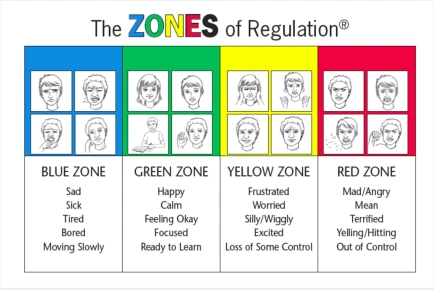
One way we help teach these skills is with Zones of Regulation. This technique groups feelings into four categories–blue, green, yellow, and red (see the graphic above for details). This common language helps us talk with students about their emotions. We work with them to understand how each zone feels and looks so that they can identify which zone they or others are in. We discuss strategies for “getting into the green zone” and use check-in charts at various times each day to practice labeling our emotions. Our students have really embraced this language, so you might want to try it out with them at home!
Logical Consequences
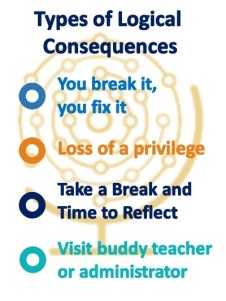 Logical consequences are reactions to unproductive, unsafe, unkind, or disruptive behaviors, but they differ from punishments in that they are based on restorative justice rather than on simple compliance with external rules. For example, You Break It, You Fix It is a type of logical consequence focused on helping kids understand that they can and must fix their mistakes: If you make a mess, you clean it up. If you hurt someone’s feelings, you apologize. If you play when the rest of the class works, you work when the rest of the class plays. Similarly, Loss of a Privilege helps kids learn that there are repercussions to their choices. For example. if you can’t use the stool safely, you will need to pick a different seating option. If you and your friend can’t keep from talking instead of working, you will both have to choose other spots to sit where you can more easily focus on your work. If you and your friends use unsportsmanlike words or actions during basketball, you will all have to pick a different activity for recess.
Logical consequences are reactions to unproductive, unsafe, unkind, or disruptive behaviors, but they differ from punishments in that they are based on restorative justice rather than on simple compliance with external rules. For example, You Break It, You Fix It is a type of logical consequence focused on helping kids understand that they can and must fix their mistakes: If you make a mess, you clean it up. If you hurt someone’s feelings, you apologize. If you play when the rest of the class works, you work when the rest of the class plays. Similarly, Loss of a Privilege helps kids learn that there are repercussions to their choices. For example. if you can’t use the stool safely, you will need to pick a different seating option. If you and your friend can’t keep from talking instead of working, you will both have to choose other spots to sit where you can more easily focus on your work. If you and your friends use unsportsmanlike words or actions during basketball, you will all have to pick a different activity for recess.More information from Responsive Classroom about Logical Consequences can be found here.
Take a Break
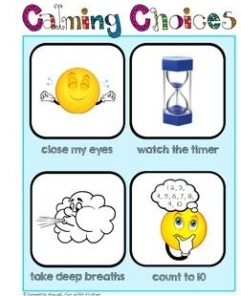 The first stage of our discipline technique is called Take a Break. Each classroom has an area designated for students to use when they need to step away for a moment to re-center or calm down before returning to class activities. This Take a Break zone usually has a timer, some fidget tools, and a comfy place to sit. Sometimes teachers encourage students to take a break, but the ultimate goal is for students to recognize when they need to take a break before they begin to make unproductive or disruptive
The first stage of our discipline technique is called Take a Break. Each classroom has an area designated for students to use when they need to step away for a moment to re-center or calm down before returning to class activities. This Take a Break zone usually has a timer, some fidget tools, and a comfy place to sit. Sometimes teachers encourage students to take a break, but the ultimate goal is for students to recognize when they need to take a break before they begin to make unproductive or disruptive choices.
While a teacher may ask a student to take a break, Take a Break is not a form of punishment or “time out” in the classic sense. Instead, it is a self-care tool we teach children so that they can a) begin to recognize the feelings that may cause unproductive or disruptive choices and b) self-regulate those feelings through calming choices.
More information from Responsive Classroom about Take a Break can be found here.

Responsive Classroom and Restorative Practices
At TESG, in keeping with our focus on social justice and social and emotional learning, we also center responsive classroom and restorative practices. Our partners at Peaceful Schools NC are advising us as we work to embed both practices in TESG’s school culture.
Responsive classrooms and restorative practices center relationships. When students, teachers, staff, and families create community and trust, the learning environment is kinder, safer, and more productive. So responsive classrooms and restorative practices promote building and sustaining relationships and repairing them when something happens that disrupts or harms the community. Both work together to build academic and social-emotional competencies. You can learn more about responsive classrooms here and restorative practice in schools from the International Institute for Restorative Practices.
A responsive classroom is one where students are welcomed with morning meeting or advisory meeting, rules are co-developed, students have brain breaks, there’s a blend of active teaching, quiet time, individual and small group work. Restorative practices may be folded in if and when an incident occurs, students are guided through active reflection. Students are asked to respond to a series of questions, either aloud or in writing, as a way to help them process the incident, their role in it, who was affected and how, and what is needed to move forward. This guided reflection occurs frequently and formally/informally in the classroom, as students navigate all the social interactions that happen at school. The cards below offer an example of questions used in this guided reflection. The first card is for someone who has made a mistake/hurt someone. The second card is for the person who has been hurt by another person’s actions.
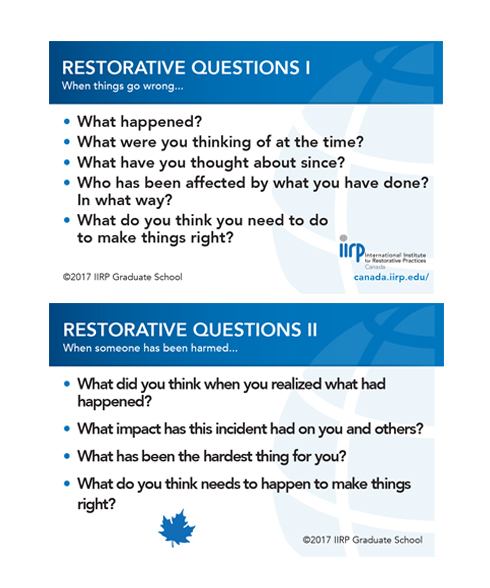
A key component of both responsive classrooms and restorative practices is the use of circles either to honor each student’s presence and/or manage conflict. For example, every day, all classes participate in circles during Morning Meeting. This is a time for students and teachers to learn about each other, practice greeting and welcoming each other, and develop a class culture. These proactive circles lay the groundwork of community and trust. When issues arise, we also use circles to help those involved repair their relationships, community, and trust. In these restorative circles, participants have the opportunity to talk about how they are feeling and thinking, explore their role in the incident, and make a plan for how to restore and move forward.
